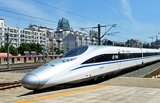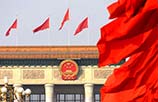Understanding China's 'around 7 percent' growth target
(Xinhua) Updated: 2015-10-26 13:37For those obsessing over China's annual growth target of around 7 percent, the 6.9-percent expansion during the third quarter was a disappointment.
The rate, the lowest quarterly expansion in 6 years, has led some China pessimists to jump to the conclusion that the government missed the annual growth target, which, on a few fronts, is a misunderstanding of the intent when setting such goals.
First, China's "around 7 percent" growth target is an anticipated goal, not an obligatory one.
By allowing the market to play a bigger role in resource allocation for the world's second largest economy, China's growth has been under the combined influence of several domestic and external factors, making economic operations extremely intricate.
Rather than a binding target, the government's annual goal serves more as a guideline and acts as a message to market players to ensure the proper running of the economy.
Second, the "around 7 percent" target is not strictly numerical, rather it is a concept designed to steer the range of growth. Authorities have repeatedly stated that growth slightly above or below the 7 percent mark should be counted as within range.
It is too hasty to judge China's economic health on the performance of a single quarter, which is easily affected by short-term factors such as stock market fluctuations and monetary policy changes in other economies.
Looking at the bigger picture, the fundamentals that have underpinned China's steady growth remain intact.
Instead of fixating on the 7-percent figure, a more comprehensive understanding of the goal should be adopted, as GDP growth, employment and industrial structure are all key factors that need consideration when assessing economic conditions.
On the bright side, China's job market remains largely stable despite economic headwinds.
China's registered unemployment rate in urban areas stood at 4.04 percent at the end of June, and 7.18 million new jobs were created in urban areas in the first half of the year.
Compared with investment and exports, consumption has been a less conspicuous growth driver for China over the past decades, but it is catching up fast.
In the first half of 2015, consumption contributed more than 60 percent to economic growth, evidence of China's restructuring success.
Considering the Chinese habit of saving instead of spending, there is still huge potential in encouraging consumption.
Industrial structure is also improving. The service industry accounted for 49.5 percent of GDP in the first half of 2015. In 2010, the share was 39.2 percent.
The sector's role in shoring up growth has helped ease the country's reliance on resources and energy, and facilitated the economic transformation toward a more technology- and innovation-driven model.
Under government encouragement and support, innovation and entrepreneurship is being embraced as a source of competitive advantage, with meaningful advances emerging in fields such as mobile apps, consumer electronics and renewable energy.
The result is a start-up boom in China, with 30,000 new companies registered everyday in the first three quarters.
There are positive economic changes emerging almost every day as new growth drivers take effect to combat downward pressure from industrial overcapacity, a sluggish property market and slowing trade growth.
There is no doubt this will be a painful battle, but with deeper reforms and wider opening-up, China's economic resilience should not be under-estimated.
- Leaders focus on growth at plenum
- China to buy more grain abroad, shift farming focus
- Yangzhou record for fried rice is revoked
- COMAC developing wide-body jetliner
- 100 million couples would be eligible under a universal two-child policy
- Seminar addresses humanitarian aid challenges
- New center to fight cross-border crime
- Program to boost medical benefits
- Taiwan's wartime resistance wins praise
- Stress, depression cool the Chinese passion for sex







